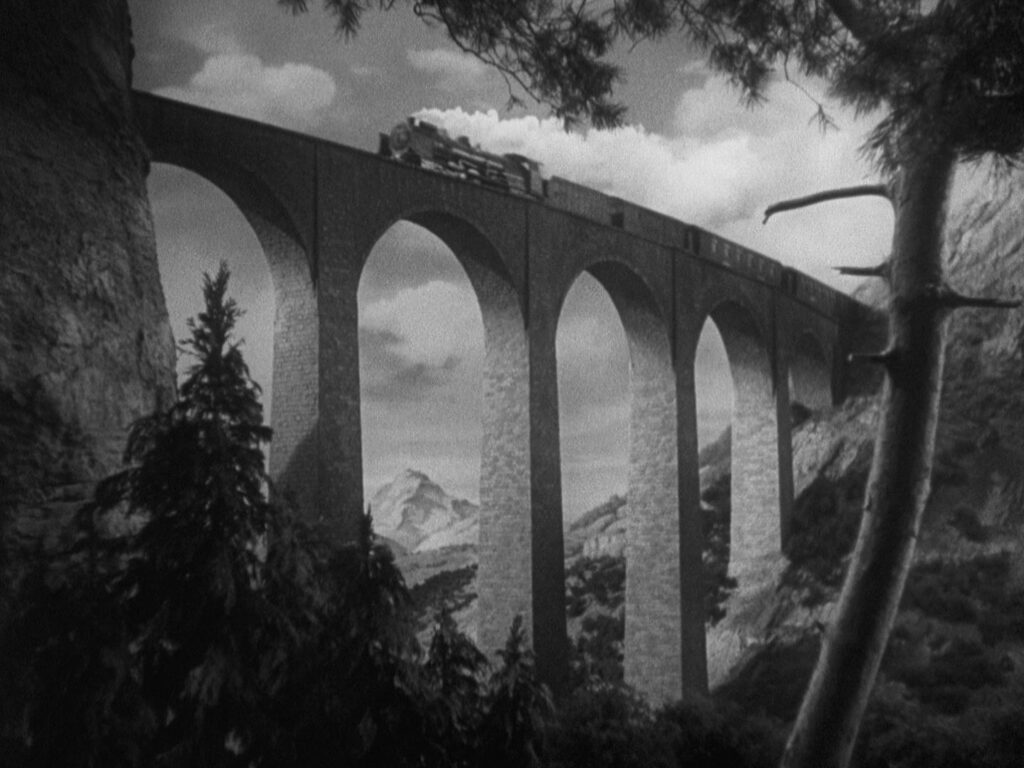
The Lady Vanishes
1938, directed by Alfred Hitchcock
In the final seconds of The Lady Vanishes, as Miss Froy welcomes Iris and Gilbert to the Foreign Office, her smiling face fades to black. The lady, in other words, literally vanishes before our eyes. Of course this is not the vanishing that the title refers to, but neither is the moment when Miss Froy vanishes from her train compartment while Iris naps in the opposite seat. Hitchcock certainly knew that viewers would connect the title to that central plot twist, and he probably smiled privately to himself knowing they would be wrong.
In fact Miss Froy vanishes no fewer than ten times, if you count the two already mentioned plus her finger-written name vanishing from the train window. She vanishes behind the hotel door in a gust of wind; she spirits herself away from the restaurant; she disappears behind Boris when he passes her door; she turns into a silhouette behind her balcony curtains; she dissolves into darkness when night falls; she slips suddenly into the train; and during the shoot-out she takes leave of her fellow passengers, vanishing over a ridge. These might not sound extraordinary – movie characters always come and go – but every time Miss Froy exits a scene, it’s shot in a way that can be described as “vanishing”. When Iris returns to her compartment at the film’s midpoint, even the mirage of Miss Froy surfaces and vanishes four times in quick succession as Iris looks into each hostile face.
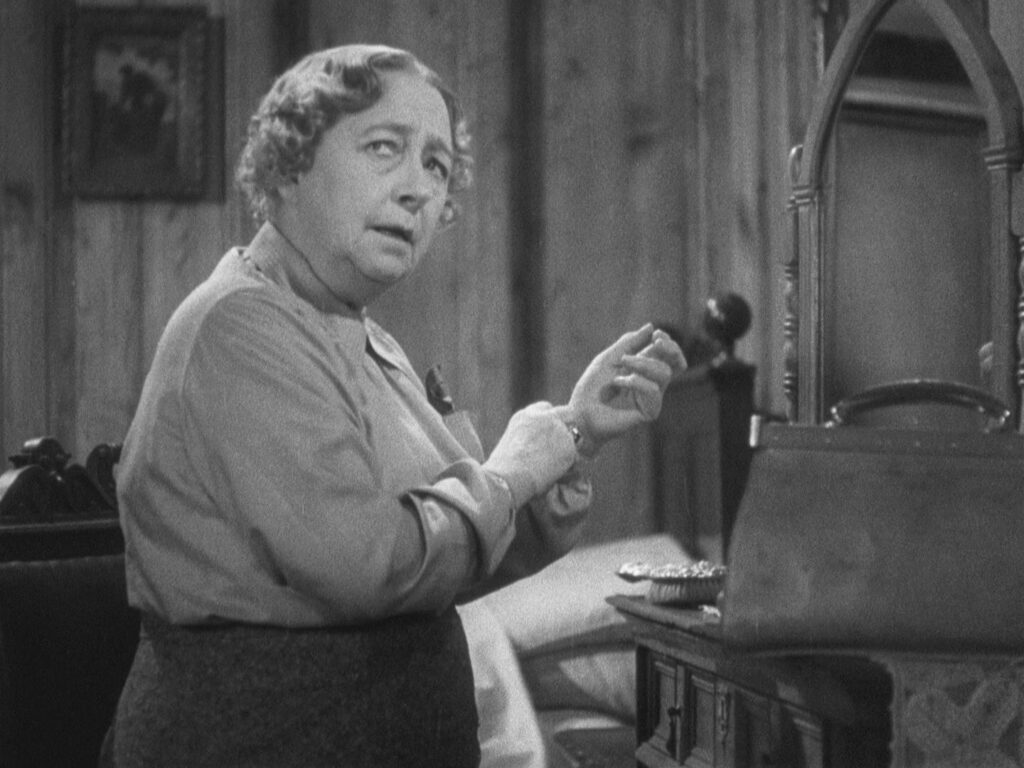
Which of these vanishings does the title refer to? The question may sound frivolous, but the same line of inquiry leads to a more pertinent question: Who is the lady in the title? Miss Froy is a wonderful personality, a model of British pluck and grandmotherly warmth, but with only about 15 minutes of screen time she is not the main character. The protagonist’s name, on the other hand, literally refers to a vanishing. In cinema, especially in silent films, an iris is a technique for making someone vanish, wrapped in a circle of darkness.
Iris, though, doesn’t tend to vanish like her elder friend Miss Froy. She disappears once, for about eight seconds, inside Signor Doppo’s trick cabinet, but that hardly justifies the title. What does justify it is the vanishing of Iris’s prospective ladyhood. In the hotel she stands on a table and declares to her girlfriends that on the next Thursday she’ll be wed to a British lord, but when she and Gilbert arrive in London she hides from her fiancé and forfeits her plan to become a lady in the heraldic sense of the word.
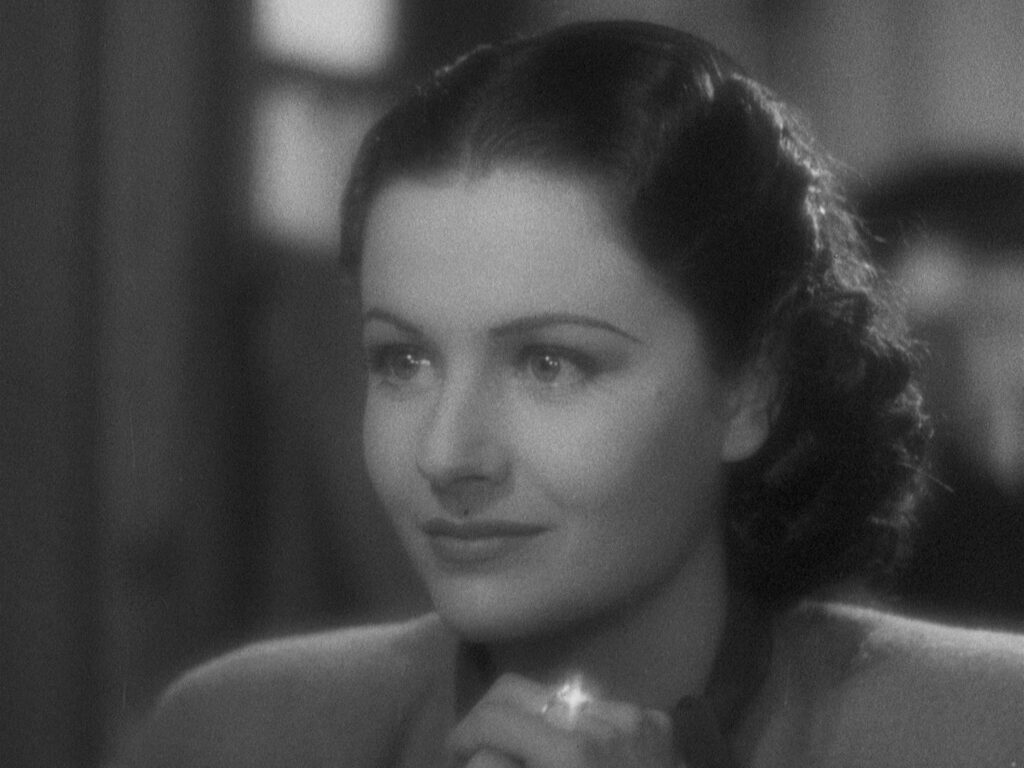
Still, none of this will likely convince anyone until we realize what Hitchcock does with the characters’ names. If Iris’s name is so significant, surely Miss Froy’s is as well. Iris initially mishears it as “Freud”, and Miss Froy carefully corrects her: “o-y, not e-u-d.” She goes on to say that Froy “rhymes with joy,” and when enemy agents replace Miss Froy with a Madame Kummer, whose name means “sorrow” in German, it only reinforces the link to Sigmund Freud, whose name is so close to the German “Freude” which means “joy”.
“Iris”, “Froy”, and “Kummer” all come from the source novel The Wheel Spins by Ethel Lina White. Whether their meanings in the film are coincidental, whether they inspired Hitchcock’s line of thought, or whether the director merely took advantage of them, it’s hard to doubt the significance of Freud, considering how much of Freud there is in Hitchcock’s subsequent films. Mr. Todhunter’s name is also in the novel, but Hitchcock puts its literal meaning (the German “Tod” + the English “hunter”) into the unfortunate man’s mouth when he warns his fellow passengers that they’re “inviting death” right before he invites death by surrendering and promptly gets shot dead. The remaining character names are not in the novel. The villainous doctor Egon Hartz combines the German “hart” (hard) with the Freudian “ego”, and the superfluous “n” and “z” hint at the word “Nazi”. Dr. Hartz speaks in Freudian terms, calling Miss Froy a “past association… subconsciously remembered” and raising a toast with Iris and Gilbert: “…and may our enemies, if they exist, be unconscious of our purpose.”
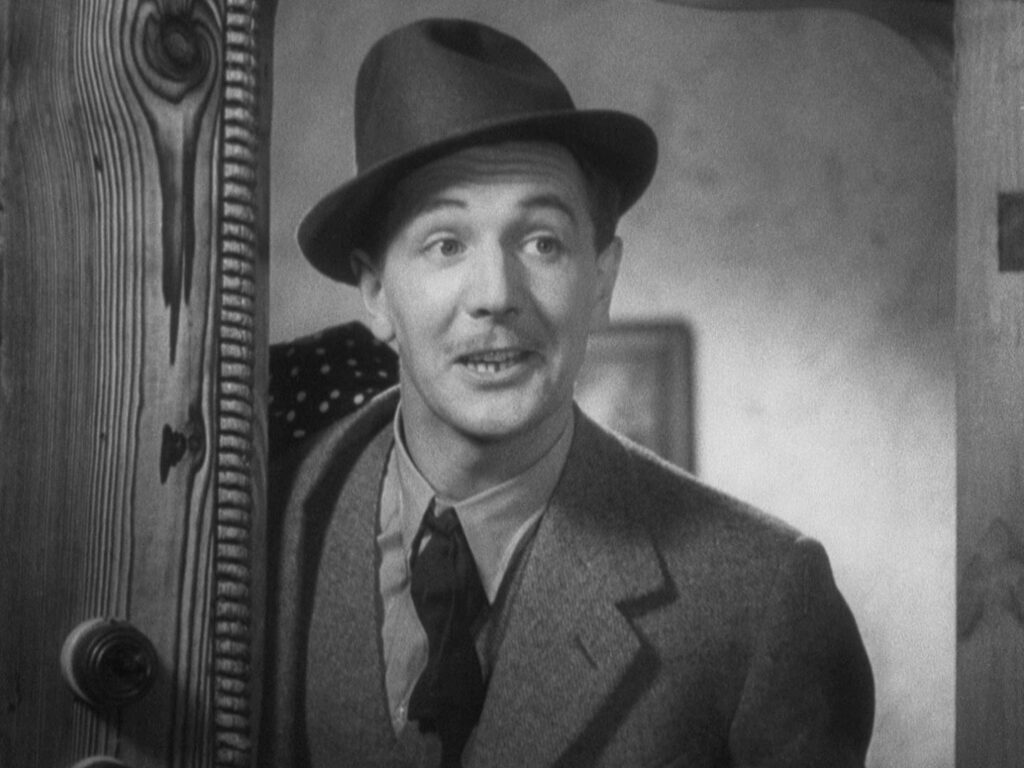
When Madame Kummer replaces Miss Froy in her seat, Gilbert replaces Miss Froy as Iris’s companion. The reversal of “joy” and “sorrow” is congruent with all the gender reversals… Gilbert’s name contains the word “girl”, while Iris’s surname Henderson contains “son”. Not only is Miss Froy doing “a man’s job” by 1938 standards, but Iris and Gilbert switch the roles of Richard and Pamela from The 39 Steps. This time it’s the woman who knows something nobody else will believe, and the man is the unconvinced companion. Meanwhile she lands all the blows against Doppo while Gilbert keeps asking Iris for help.
One name in particular, also of Hitchcock’s invention, reveals the movie’s purpose. With so many allusions to Freud, the idea that a young woman would marry a Lord Charles Fatheringale cannot be neutral. His name points to the Elektra complex, Freud’s idea that before sexual maturity girls typically go through a phase of erotic longing for their fathers. Iris is marrying not for love, but for status and security, like a little girl seeking refuge in her father’s arms… but over the course of her adventures her affection shifts to Gilbert, a young man whose professed respect for his own father marks him as mature, setting him apart from the oedipal man-boys in Hitchcock’s later films.
This, then, is the sense in which the “lady vanishes”. Just as any ordinary girl gets over her wish to be Daddy’s princess, Iris no longer wishes to be a Lady. Instead of reaching for high status, she satisfies herself with actual love with an ordinary man. The psychological distinction between immature and mature sexuality is inseparable from the social distinction between the exalted and the ordinary. A young girl’s elektral bond to her father is characterized by a craving for attention, while mature sexuality implies reconciliation to a more realistic status.
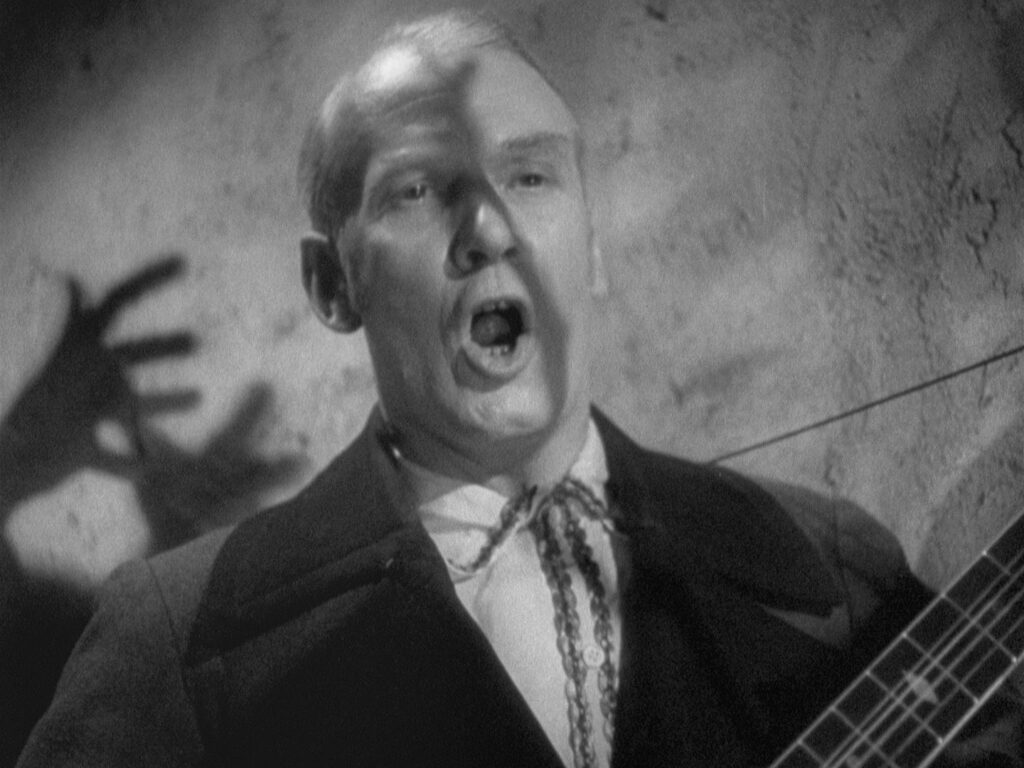
Hitchcock’s films always elevate the virtues of ordinariness – think of “Ordinary Smith” in Stage Fright, or Barry Kane playing the triangle in Saboteur. Here, in 1938, Hitchcock pinned his hopes for Britain on its ordinary citizens, believing that people like Iris, Gilbert, Miss Froy, and the train passengers might save the country from the clouds of fascism gathering in Europe. Hitchcock was not naive, though, and his trust in ordinary people is always paired with an insistence on their responsibilities. When things turn out badly, it’s not because of some powerful megalomaniac, but because of ordinary people misled into the service of destructive masterminds. The phony nun in The Lady Vanishes is a recurring Hitchcock character type, the ordinary person gone wrong – but this time, as with Mr. Memory in The 39 Steps, her patriotic sense of duty turns her allegiance around, leading to a noble sacrifice. Her corresponding character in Rebecca will not be so fortunate.
At the climactic shoot-out, owing partly to the concentration of British tourists in the dining car at tea time, the eight besieged passengers form a microcosm of British society. Charters and Caldicott are a familiar type, habitually self-absorbed but rising to the occasion with exemplary courage and resolve. All the ordinary British unite to resist the enemy, while only the upper-class snob Mr. Todhunter lets them down, waving a white flag to capitulate just as England’s social elites were more likely to favor appeasing the Nazis. Todhunter’s name, appropriately, mixes German with English.
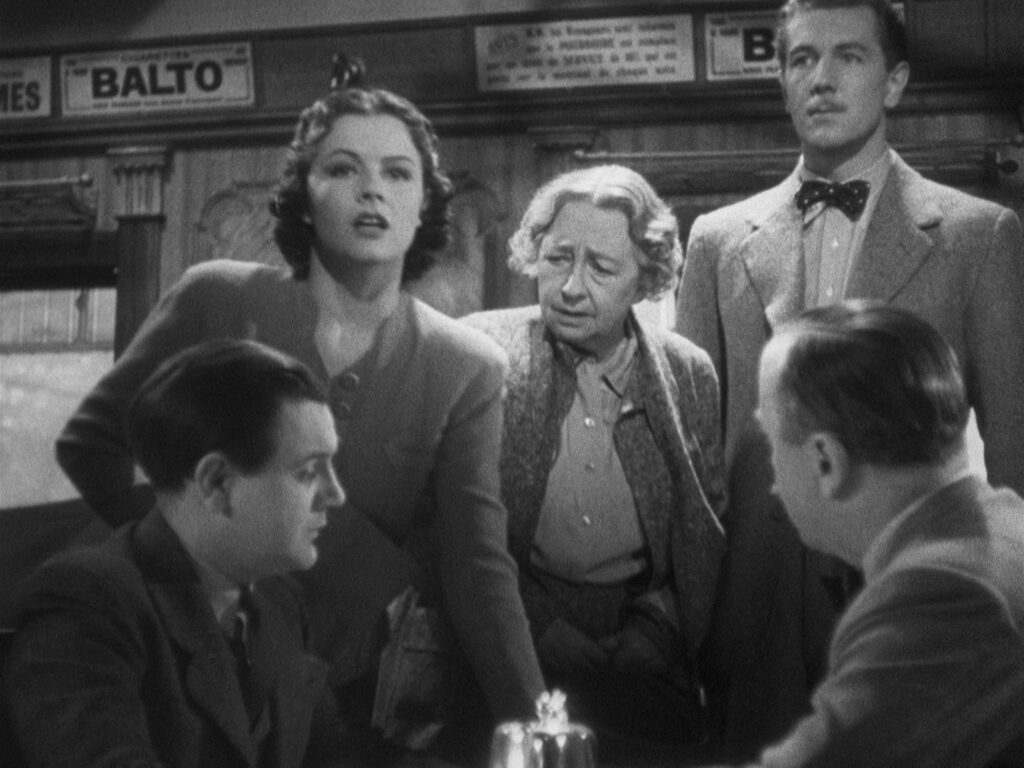
Like Hitchcock’s other British thrillers of the 1930s, The Lady Vanishes was prophetic about war and fascism on the continent. These films were rallying cries, calling the British people to ready themselves for a critical fight ahead. The transparent geopolitical allegory is not separate from Iris’s arc of sexual maturity – Hitchcock wanted us to understand that juvenile sexuality in adults goes hand in hand with a wish to be “special”, which makes people vulnerable to the appeal of totalitarians. It takes a mature person to accept ordinariness and to become an integral member of a democracy.
CONNECTIONS:
The 39 Steps – Memorable supporting character carrying a memorized secret message; urgent need to remember a musical tune; protagonist who knows something no one else believes; impromptu speech appealing to strangers; deprecation of the word “spy”; character who turns against a treasonous plot after assisting in it; train whistle confused with a woman’s scream; male and female leads initially dislike each other; train crosses a spectacular bridge
Idiot’s Delight – Anticipation of WWII; international rail travelers stuck in an Alpine hotel
Casablanca – International medley of characters with spectrum of national loyalties; reluctant bystander(s) persuaded to join conflict
Shadow of a Doubt – Protagonist who grows out of her Elektra complex
Dead of Night – Comic duo of Basil Radford and Naunton Wayne representing the British spirit
Stage Fright – Psychologically relevant surname ending in “son”
Strangers on a Train – Young woman’s development from Elektral sexuality to maturity
Vertigo – Woman replaced by another in same clothing; story of juvenile sexuality
L’avventura – A woman disappears more times than the plot seems to indicate.
Marnie – Suspense story in which a woman is stuck with a man she initially dislikes
LIST OF MISS FROY’S VANISHINGS:
- 0:02:38 – Behind the hotel door in a gust of wind
- 0:15:25 – Into the back of the hotel restaurant
- 0:17:43 – Behind Boris and into her room
- 0:24:51 – Behind her curtain at the hotel balcony
- 0:25:05 – Fade into darkness at nightfall
- 0:26:44 – Slips into the train with Iris
- 0:32:17 – Last time seen before abducted
- 0:48:42 – Mirage fades over face of Signora Doppo
- 0:48:45 – Mirage fades over face of the Baroness
- 0:48:48 – Mirage fades over face of Signor Doppo
- 0:48:52 – Mirage fades over face of Madame Kummer
- 0:51:44 – Name fades from dining car window
- 1:27:09 – Escaping into the forest
- 1:35:24 – Fade to black at the end of the movie